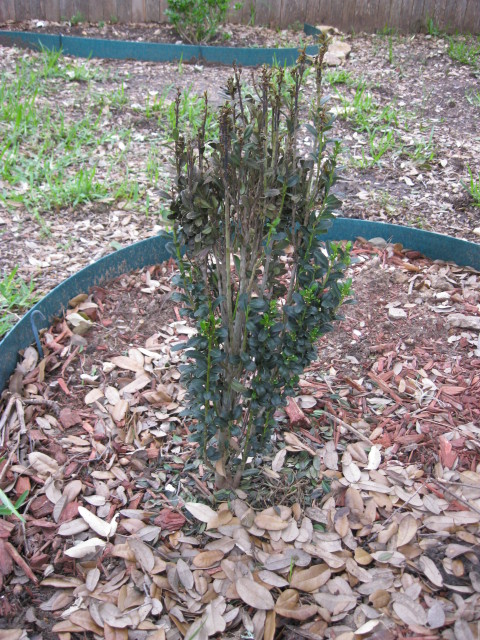QuestionQUESTION: I live in southern Texas. Three months ago I planted numerous Sky Pencil Holly trees and a few small boxwoods. I noticed the boxwoods dropped their lower leaves shortly after planting and are slowly recovering without treatment. Last week that one has completely shed its leaves, and now others are too. The leaves are wilting at the top of the tree, and the branches turned black. The branches are still pliable and there are still healthy ones on each tree. What can I do to save the trees? Could the boxwoods have been diseased when I purchased them and spread?
Michelle
ANSWER: Hi Michelle:
The symptoms that you describe may be due to an unfavorable root environment. This can be produced by a variety of ways. Often soil moisture (not enough or too much) can do this. The soil needs to be able to drain easily, so be sure to avoid planting in low spots where water tends to collect and stand. Soils with a lot of clay is not good either. Clay also tends to hold water for long periods. These plants do not like wet feet. So, I'd first look at the moisture situation in the soil. Check also the lower stems for any evidence of injury/damage where the bark may have been damaged. If you wish, you can send me a picture of a group of these affected plants to look at. The blackened stems and wilt may indicate a potential serious situation in which there may be some level of root rot.
Regards
Steve
---------- FOLLOW-UP ----------
 Sky Pencil Holly
Sky Pencil Holly
QUESTION: Thanks for your insightful response, Steve. See attached image of a declining Sky Pencil Holly. I dug one up and the root ball is seemingly healthy, however I am very new to gardening and admit I'm not sure what the signs of root rot are. The soil is very light sandy texture as opposed to a dense clay but it does seem to stay wet for longer that I'd expect. There is no damage/injury on the bark of the lower stems. Would replanting in a moisture control soil help them recover? At this stage, can they even recover?
Thank you for your help,
Michelle
AnswerMichelle:
From your photo, looks like water/drainage may be or has been an issue. Looks as if water may have stood or collects from the bare areas in the background. You can (1) prune out the black sections and wait for a possible recovery- that is if you feel the soil drainage may have improved or (2) consider relocating plant now to higher ground or an area where water does not collect for extended periods. I personally would vote for number 2 option. If you do go with #2, water it in well at transplanting, then leave it alone for a while.
Regards
Steve






